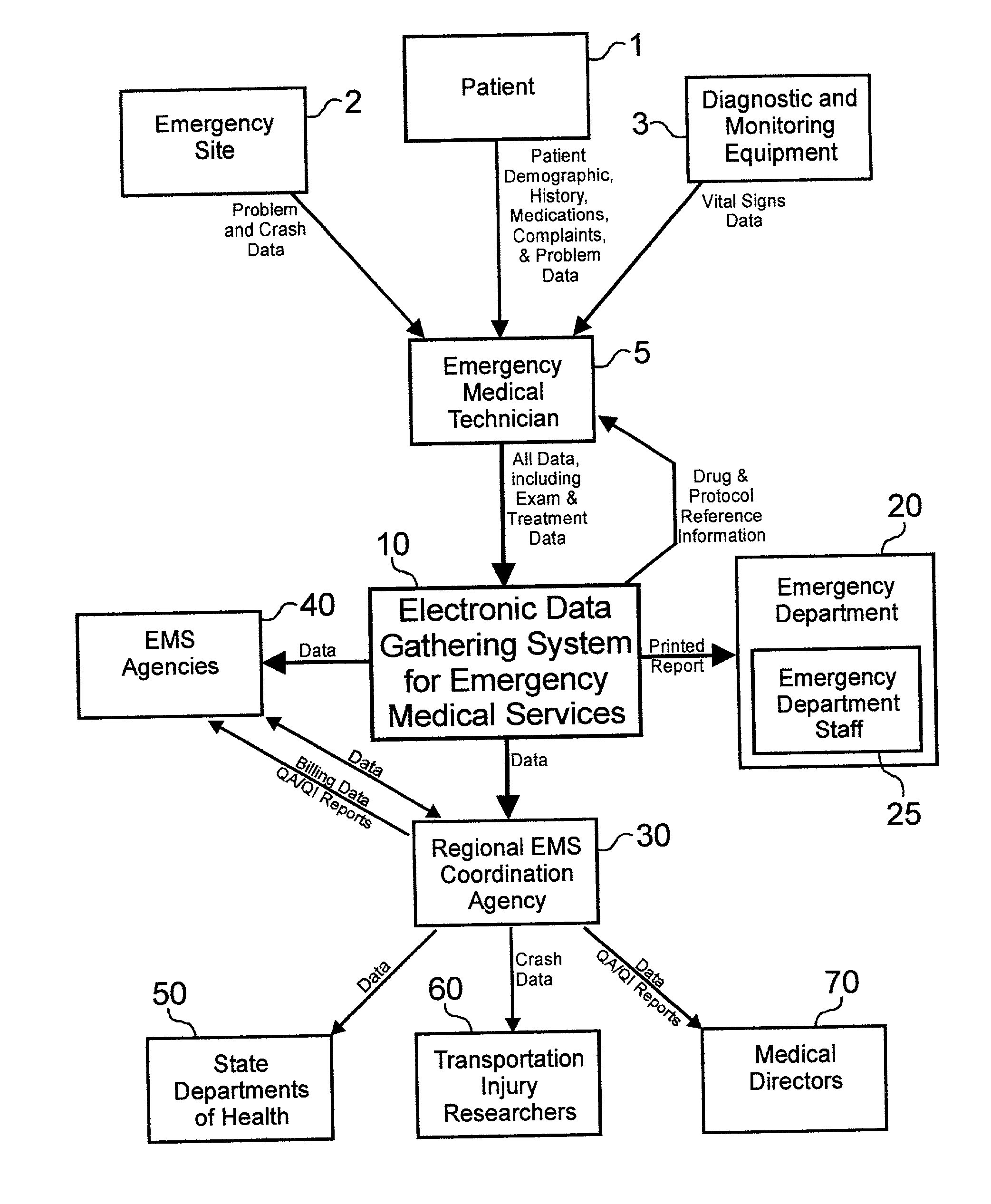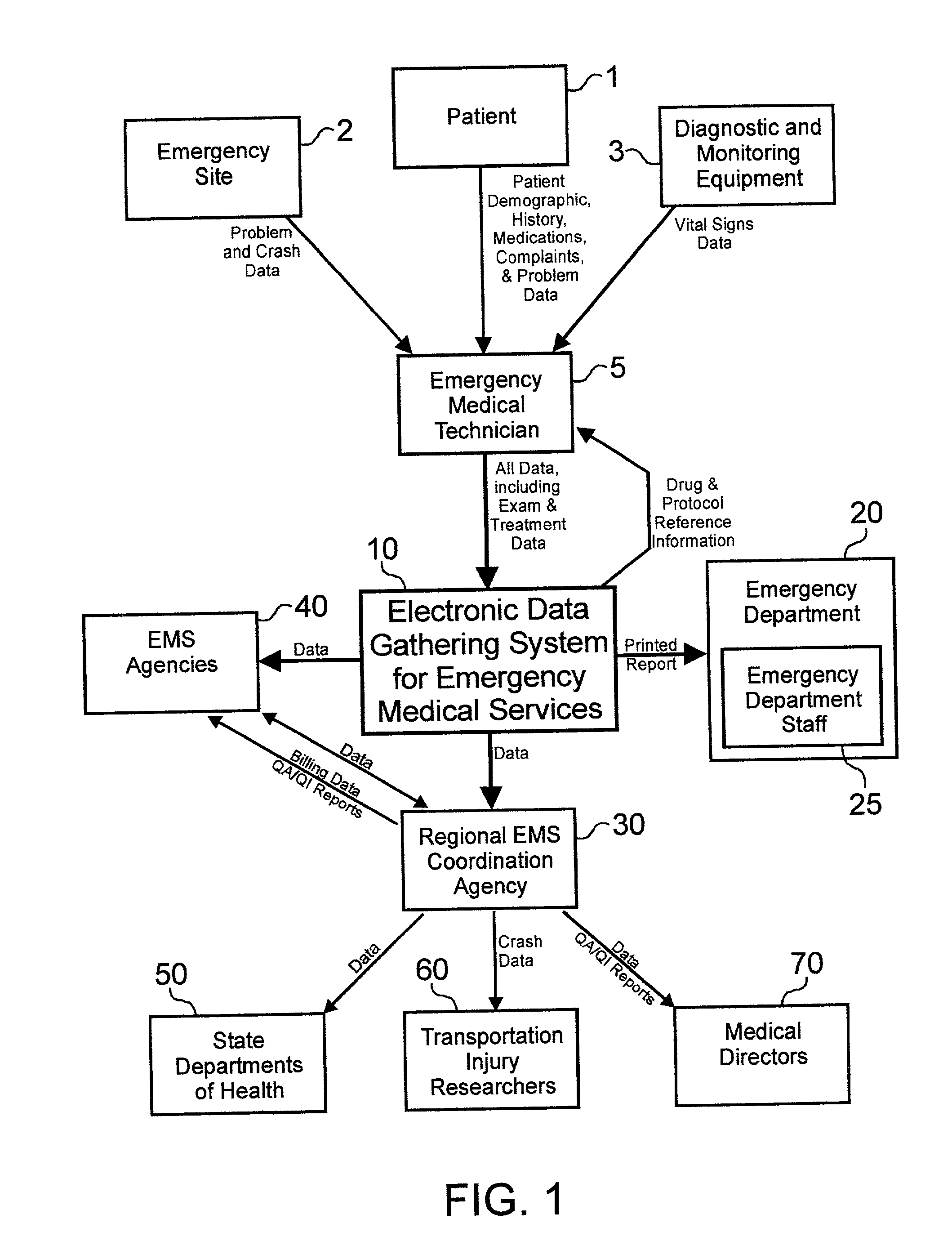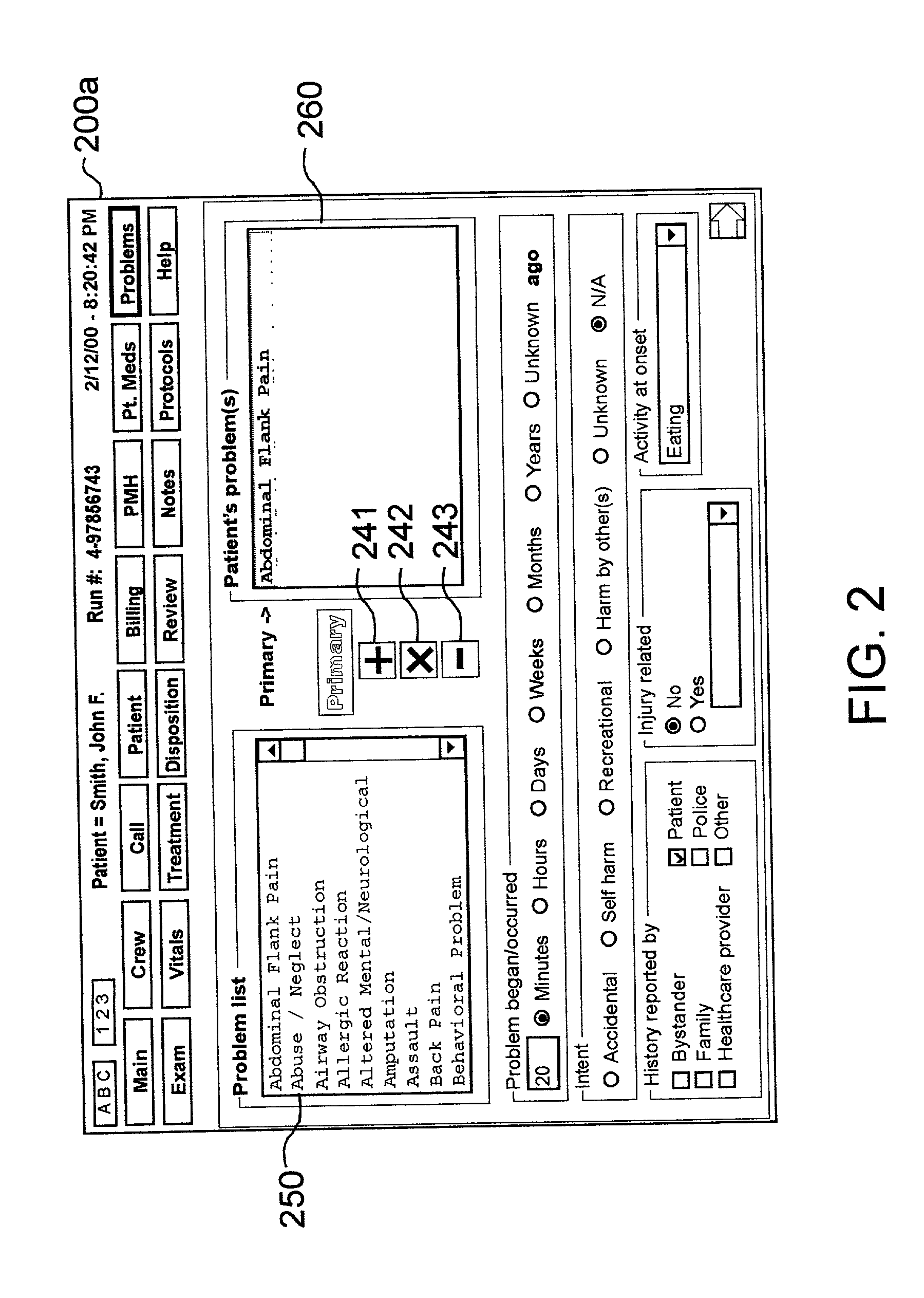Electronic data gathering for emergency medical services
a technology for emergency medical services and electronic data, applied in the field of electronic data gathering for emergency medical services, can solve problems such as lack of standardization, prone to inaccuracy, and failure to provide data in a timely manner
- Summary
- Abstract
- Description
- Claims
- Application Information
AI Technical Summary
Problems solved by technology
Method used
Image
Examples
Embodiment Construction
[0033] The invention provides EMS agencies with a cost-effective tool to collect accurate, timely, and standardized data. It also provides EMS personnel with a compact, convenient, durable, and inexpensive device that strongly supports their efforts to provide quality out-of-hospital care.
[0034] During an emergency call, the emergency medical technicians (EMTs) have very little time to spend on entering data into a computer system. They are confronted with a large array of sophisticated medical equipment to be used in a medical crisis, when every second and every movement counts, and the medical problem confronting them contains many unknowns requiring fast, accurate and effective analysis and response centered on the patient. Consequently, the fewer movements and steps an EMT must add to the process for data gathering, the safer, faster and more effective the response will be. The invention addresses this problem by radically simplifying the user interface for gathering complex eme...
PUM
 Login to View More
Login to View More Abstract
Description
Claims
Application Information
 Login to View More
Login to View More - R&D
- Intellectual Property
- Life Sciences
- Materials
- Tech Scout
- Unparalleled Data Quality
- Higher Quality Content
- 60% Fewer Hallucinations
Browse by: Latest US Patents, China's latest patents, Technical Efficacy Thesaurus, Application Domain, Technology Topic, Popular Technical Reports.
© 2025 PatSnap. All rights reserved.Legal|Privacy policy|Modern Slavery Act Transparency Statement|Sitemap|About US| Contact US: help@patsnap.com



